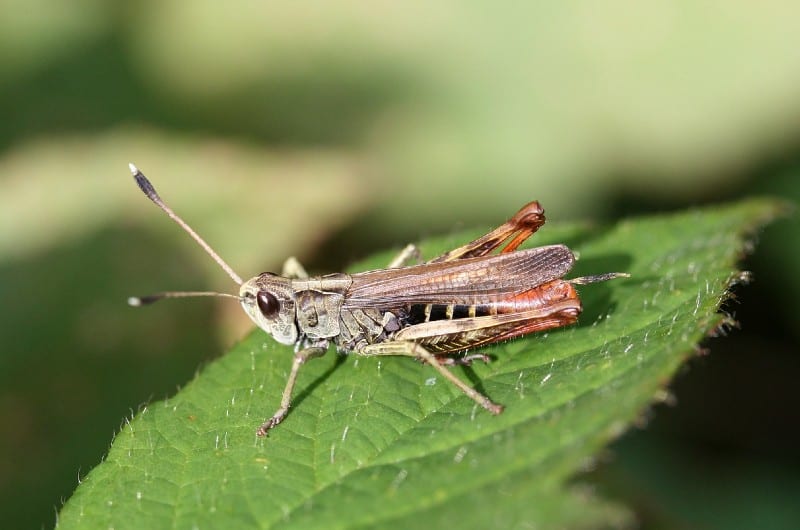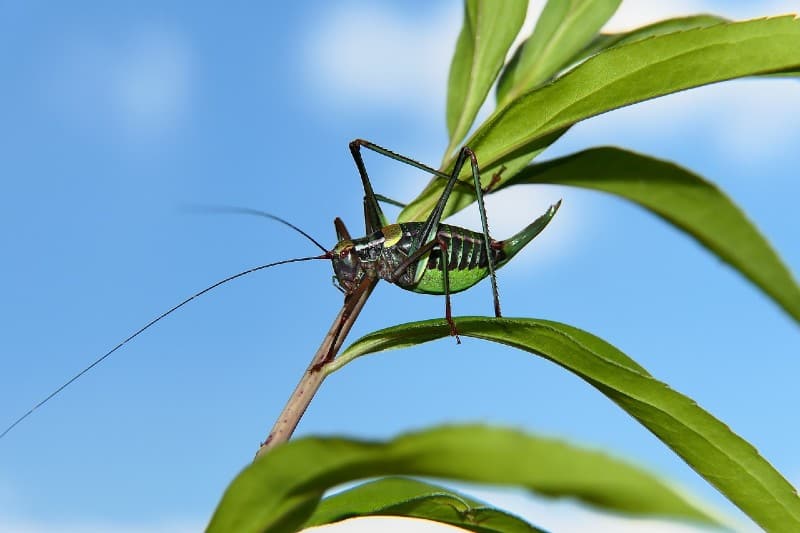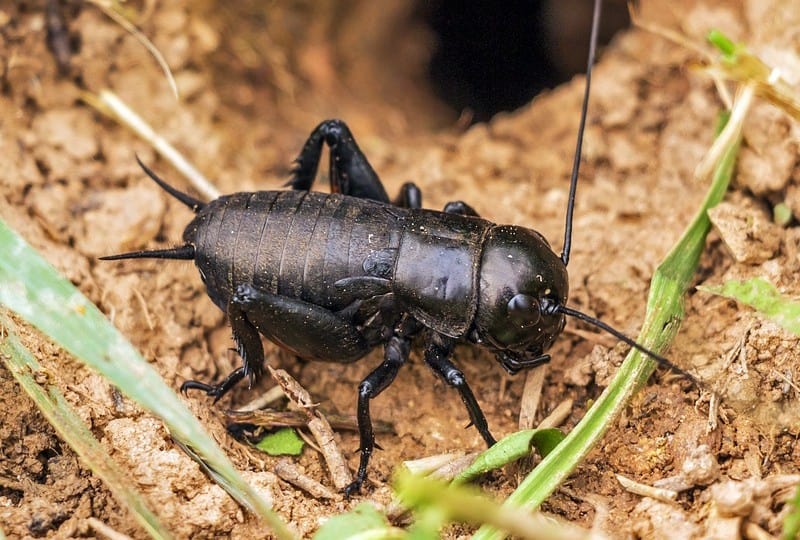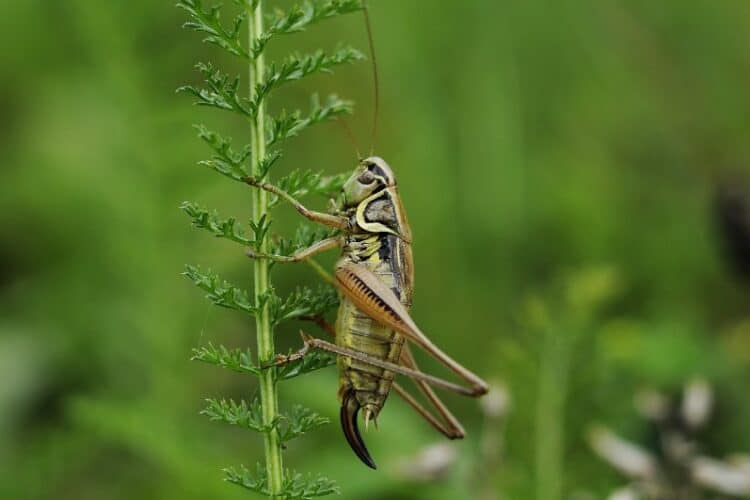The syncopated chirping of crickets is a sound that most of us are familiar with starting when we are children. And as an adult, you may find yourself hearing the same sounds in your home if one of your family members keeps crickets as pets or has a pet that eats crickets.
Crickets are small in stature, safe, and pretty easy to manage as pets. One of the common places for pet owners to purchase crickets is the popular pet store PetSmart. In this article, we are going to discuss how much crickets cost and other factors concerning them, their care, and pets that may consume these insects as part of their diet.
How Much Do Crickets Cost?
You can purchase live and freeze-dried crickets from PetSmart for about $0.11-$0.16 per cricket. The live crickets typically cost more than freeze-dried crickets, but the freeze-dried crickets may be easier to purchase in large bulk quantities. PetSmart usually has deals for the crickets.
For example, you may be able to purchase about 15 to 25 crickets for $0.11 or 40 crickets for $0.09. The sales may change week to week, and it will depend on your store location and cricket availability.
The Importance of Ensuring a Proper Cricket Diet
It is best to buy your crickets’ food in advance if you keep them as pets. It is easy to find the right food for your crickets. Crickets are an omnivore, meaning they eat both meat and plants. A typical cricket diet includes protein and produce as well as grains.
Crickets can eat a variety of foods, including insects, larvae, and flowers. If you’re considering purchasing crickets as pets, remember that healthy feeder crickets will provide your pet with the best nutrition. They should get the same nutrients in captivity as they would in the wild.
Keep in mind, if you keep crickets for food for other pets, that the crickets are also providing nutrition to your pet. Pet experts and enthusiasts refer to “gut loading” as the process of feeding prey crickets’ healthy food. You can choose from a wide range of nutritious foods to feed your crickets:
- Fruit including bananas, oranges, and apples
- Veggies including potatoes, leafy greens, carrots, and squash
- Grains, such as wheat germ, alfalfa, and rice cereal
- Packaged pet foods, such as reptile food, fish flakes, and dry dog or cat food
- Commercial food made exclusively for crickets
You’ll need to ensure that your crickets are fed properly and have plenty of space for them to move around. Crickets are able to regulate their food intake as long as there is food available in their environment.
To ensure that the crickets have enough food and water, you should check their cage at least once every two days. You can even place whole fruits and vegetables directly in their cage. To avoid making a mess, dry pet foods and grains must be placed in shallow dishes or lids.

Frequent Problems with Feeding Crickets
Like with any other pet, there are a few best practices to abide by when managing crickets. These daily practices will ensure your crickets are as healthy and nutritious as possible, regardless of whether you’re using them as feeder pets or personal pets.
Avoid Mold & Humidity Issues
For crickets to thrive, they need good air circulation and fresh foods. Your crickets might not survive if the humidity is too high. Your crickets should be stored in a tank, container, or terrarium that has a closing lid. Crickets require a temperature anywhere between 70-75 degrees Fahrenheit – which is similar to their natural environment.
You can make the habitat healthier for your crickets by allowing one side of the container in which they’re housed to be used for food and water. Also, make sure to check the food frequently for mold. You can provide dried pet food and grains regularly, as they won’t consume it all at once. And note that these foods will not mold as fast as fresh produce so they can (and should) be given more frequently.
Clean and Sufficient Drinking Water
If water levels in their environment are too high, crickets can actually drown. Consider filling a shallow container like a yogurt or condiment container with fish tank pebbles or small rocks. This will provide safe drinking water for your crickets, as they’ll have a safe and secure way to drink their water, while the pebbles will keep the containers firmly on the ground.
Some cricket owners also place cotton balls in clean water and submerge them in the habitat. This gives crickets an easy way to keep hydrated day to day. It’s very important that you keep food and water separate so that dry foods and grains don’t become more susceptible to mold.

Feeder Crickets for Other House Pets
There are quite a few different types of house pets that use crickets for nutrition. Many of these pets are omnivores and will eat crickets in addition to a variety of plant foods. It’s best to provide a substantial source for daily protein needs and other healthy minerals. Let’s take a look at the most common pets that consume crickets in their diet.
Turtles
You can feed your turtle live or freeze-dried crickets. But in most cases, a decent quality commercial pet food will work just fine for turtles. And the good thing is that these foods are typically pretty and expensive to purchase. For example, you can get an 8-oz jar of turtle food at PetSmart for under $10. Pet food purchased at a pet shop provides a wide-spectrum nutrient profile and contains all the vitamins and minerals your turtle needs for good health.
You can also give your turtle fruits and veggies, though it’s best to do this in very small quantities. For most turtles, a daily protein intake of about 39 to 45% will suffice. The protein can come from various sources including crickets, mealworms, and caterpillars.
Bullfrogs
Bullfrogs love to munch on live or freeze-dried crickets. These medium to large-sized frogs will also consume locusts, flies, cockroaches, and worms, which means that you don’t always have to go to the pet shop to find food for your frog. But if you don’t plan to spend time in your garden looking for insects, getting crickets from the nearest pet store is a good idea.
Lizards
Lizards and other reptiles also have a diet that includes crickets and other small insects. Bearded dragons, iguanas, and garden snakes all are insectivores, which means the majority of their diet includes consuming insects. These pets will eat any type of live insect, even crickets. To ensure your reptiles get the best nutrition, it is important to “gut load” crickets before you feed them.
It’s better not to feed these animals freeze-dried crickets, as they essentially contain no nutrition but are more of just an exoskeleton. Freeze-dried crickets are great for a snack, but not as a supplement for daily nutritional requirements for any pet.
Spiders
Common pet spiders such as the tarantula, huntsman spider, wolf spider, and orb weaver will also feast on crickets as part of their diet. Tiny spiders won’t likely be trying to catch and eat crickets.
As with reptiles and other animals, it’s important to use live crickets and to gut load them before they become spider food. And the great thing is that spiders aren’t voracious eaters, so you don’t have to feed these pets more than once or twice per week.

Best Way to Buy Crickets
It’s best to buy bulk quantities from retailers if you have a lot of pets to care for. This is not only much cheaper in the long run, but also saves time as you don’t need to travel to the store as often to buy what you need. You can also buy crickets online. And just like any other online purchase, the crickets will be delivered directly to your home.
It’s not a good idea to buy bulk quantities of crickets if you only have a limited number of animals to feed. For example, your crickets could die before they have a chance to be eaten by your pet. Stores like Petco and PetSmart sell smaller quantities of feeder crickets. Feeder crickets are also available at small, local mom and pop pet feed shops.
Final Thoughts
PetSmart sells live and freeze-dried crickets for about $0.11 to $0.16 cents each. However, they often have discounts available for both purchases on certain days and months of the year.
Before heading out to buy crickets for use as feeder pets to do that, it’s best to determine the amount that you will need for your pet specifically. And if you’re planning on purchasing the crickets as pets themselves, you’ll want to ensure that you also purchase an adequate food supply for them and set up their habitat properly.
Featured Image Credit: Pixabay
















